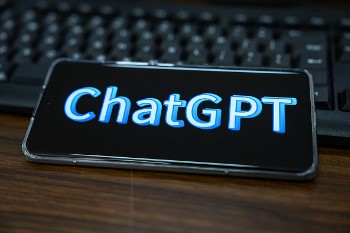Headlines and hot takes surround ChatGPT, an automated writing bot. Some commentators believe that students will never learn how to write persuasive or analytical essays again. There are real concerns about data privacy, free labor, and information reliability when using the bot. More and more people have begun asking who or what actually produced a piece of writing (see the The New York Times quiz “Did a Fourth Grader Write This? Or the New Chatbot?”). Meanwhile, many educators are embracing a host of new plagiarism detection tools that can catch students who are cheating with ChatGPT.

In our work as educators and researchers at the University of Massachusetts Amherst, we emphasize a very different approach to teaching and learning with ChatGPT, where students act as critical analysts of artificial intelligence writing tools. When students learn to critically interrogate the media, text and tools they use and interact with daily, they build their critical media literacy skills, which are essential for successfully navigating today’s technology- and media-entrenched environments.
To help students develop their critical media skills in the era of AI writing tools, we have developed a series of critical media literacy guides for our free, open-access, online e-book ”Critical Media Literacy and Civic Learning.” Our free, open-access ”Teacher and Student Guide to Analyzing AI Writing Tools (like ChatGPT)” resource features prompts that ask students to investigate both the AI writing tool (e.g., Who owns the tool? Who designed the tool? Why was it made? How does it make money?) and the text it produces (e.g., How well does the text mimic human writing? How is information presented? How credible and reliable is the information?). All these questions and more focus students’ attention on both the content of the information and the system that is generating it.

Using such tools as a starting point, teachers can design learning activities where students critically interrogate pieces of ChatGPT-generated text. (Note: Before you enhance lessons with ChatGPT, please know that the Terms of Use state that the user must be 18 years or older to use the tool. Therefore, you, as the teacher, should use your own device to try out prompts and generate text for students to analyze rather than asking students to use ChatGPT on their own.)
What might this look like in different subjects?
- Students in civics or history classes might read political position statements issued by politicians or political advocacy groups and then compare them with ChatGPT-generated political position statements.
- Students in English language arts classes might annotate the privacy policy and terms of use of ChatGPT and then design a news video to inform others about their findings.
- Students in science and math classes might ask ChatGPT to explain a key concept (e.g., climate change, mathematical functions, balancing chemical equations) and then engage in an internet detective activity to try to uncover the original sources of text ChatGPT used to generate its response.
- Students in health and physical education classes might critically interrogate ChatGPT-generated exercise plans, recipes for healthy eating and/or mental health advice.
- Students in music classes might ask ChatGPT to write a song or rap in the style of Taylor Swift, Beyonce or another artist and investigate the style, word choices and language of the music it writes.
- Students in computer science classes might ask ChatGPT to write a blog post or news article about artificial intelligence and then critically examine which of the “18 pitfalls in AI journalism” it makes, if any.
The creative learning possibilities for students are vast. Rather than banning AI writing tools, adults and students should unpack them together and learn how they work. This will help students strengthen their critical media literacy skills and maybe even become better writers and more critical thinkers in the process.
Robert Maloy is a senior lecturer in the College of Education at the University of Massachusetts Amherst, where he coordinates the history teacher education program and co-directs the TEAMS Tutoring Project. His research focuses on technology and educational change, teacher education, democratic teaching and student learning. He is co-author of several books, including “Transforming Learning with New Technologies (4th edition).”
Torrey Trust, Ph.D., is an associate professor of learning technology in the University of Massachusetts Amherst College of Education’s Department of Teacher Education and Curriculum Studies. Her work focuses on how technology shapes educator and student learning. Trust served as a professional learning network leader for the International Society for Technology in Education for five years and was selected as a 2018 recipient of the ISTE Making IT Happen Award.
Opinions expressed by SmartBrief contributors are their own.
_________________________
Subscribe to SmartBrief’s FREE email newsletter to see the latest hot topics on EdTech. It’s among SmartBrief’s more than 250 industry-focused newsletters.
